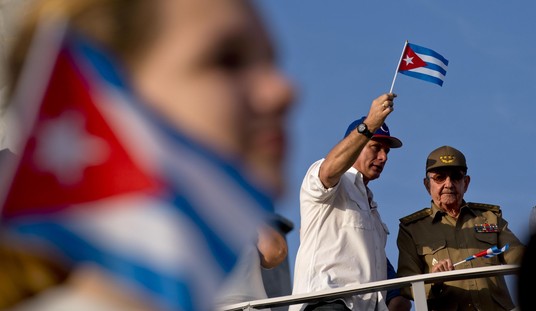Ed has already written about several highlight from the FBI investigation into Hillary Clinton’s private email server but I wanted to point to one more. The FBI report describes how Hillary’s attorneys decided which emails would be (belatedly) turned over to the State Department. Here’s that section of the FBI report:

Heather Samuelson was an attorney working with Cheryl Mills. She sorted the emails into a work folder by doing searches of the “To,” “From,” and “Subject” fields but did not read the contents of the emails. Everything she pre-selected was then printed in Mills’ office where, according to Samuelson, Mills and Clinton’s other attorney David Kendall “reviewed” the emails.
Samuelson says emails they deemed to not be work related were shredded and removed from the archive which was later turned over to the State Department. It’s not clear from the document how many times this happened.
What’s really interesting is that Cheryl Mills seems to have told the FBI a somewhat different story. She claims not to have reviewed the emails Samuelson was printing in her office unless she was specifically asked for “guidance.” But something about this doesn’t quite add up. Here are a few questions that come to mind:
- Why did Samuelson tell the FBI Mills and Kendall were reviewing all the printed emails if they were only reviewing them when Samuelson asked them to do so?
- On what basis would Samuelson have a question about a particular email if she was not reading them?
- Why was David Kendall there (apparently in Mills’ office while the emails were being printed) if not to review the emails? Was he also on hand in case a question arose about a subject line?
- Why was it necessary for Mills to review these emails at all (assuming she did)?
All of this is reminiscent of a story published last September in which Ray Maxwell, a former State Department Deputy Assistant Secretary, claimed he was briefly part of a document sift led by Cheryl Mills:
“When Cheryl saw me, she snapped, ‘Who are you?’” Maxwell says. “Jake explained, ‘That’s Ray Maxwell, an NEA deputy assistant secretary.’ She conceded, ‘Well, OK.’”
Maxwell says the two officials, close confidants of Clinton, appeared to check in on the operation and soon left.
Maxwell says after Mills and Sullivan arrived, he, the office director and an intern moved into a small office where they looked through some papers. Maxwell says his stack included pre-attack telegrams and cables between the U.S. embassy in Tripoli and State Department headquarters. After a short time, Maxwell says he decided to leave.
At this point it seems unlikely we’ll ever get more information on Mills’ involvement sorting Clinton’s email since she was acting as Clinton’s attorney at the time. Still, the fact that Mills seems to tell a different story from Samuelson about her involvement is intriguing.








Join the conversation as a VIP Member